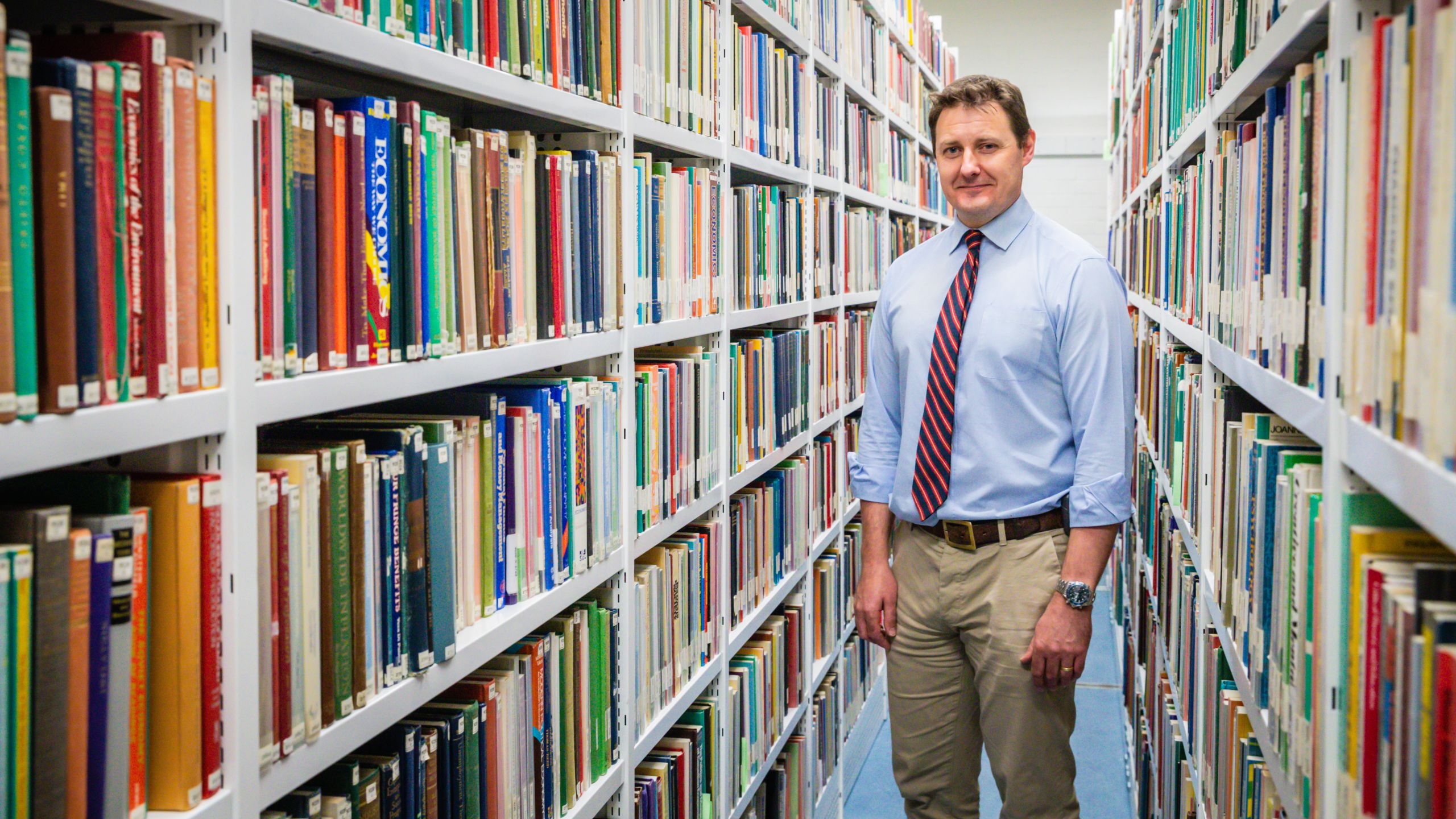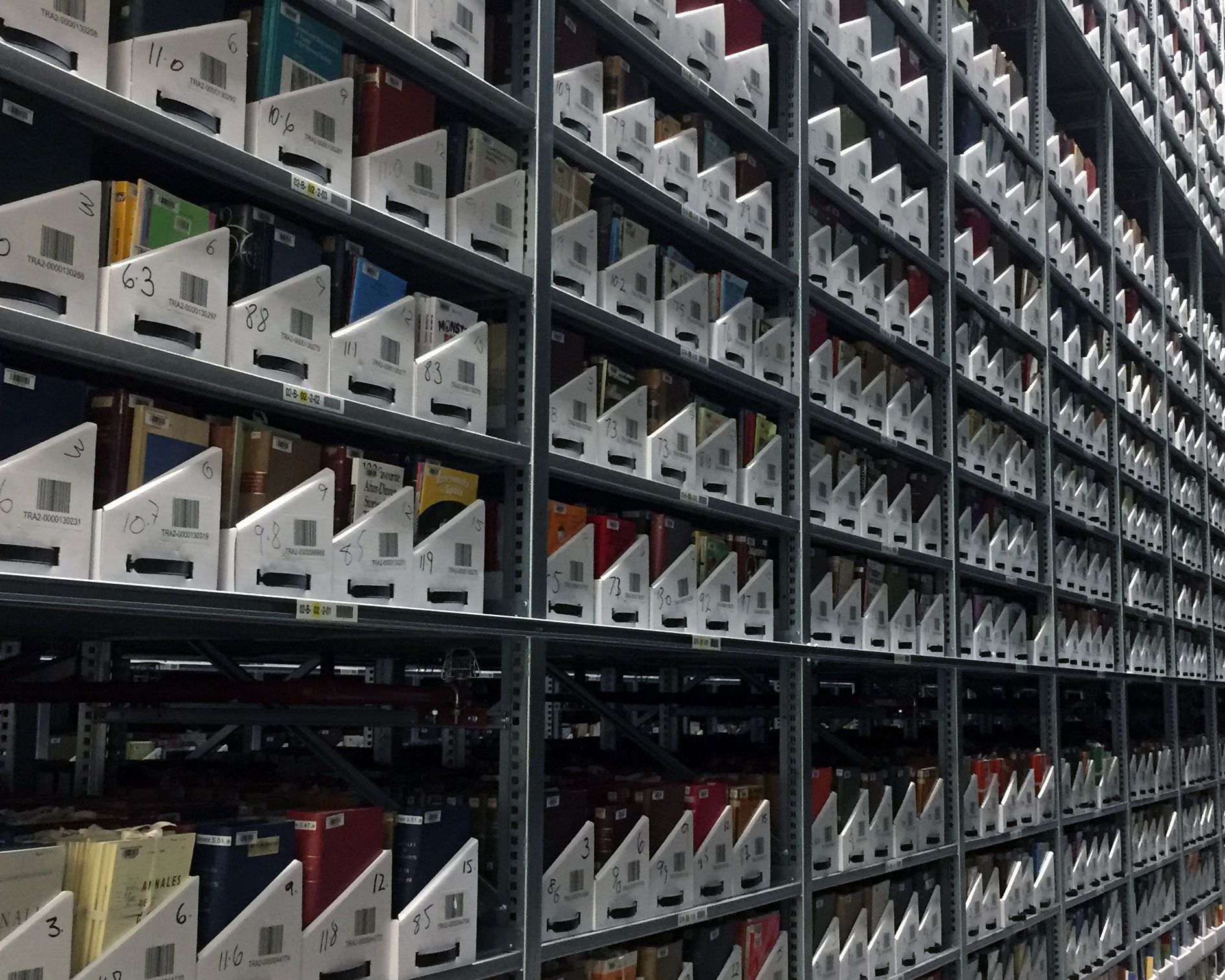This Cambridge Life
The Fetcher who became keeper to millions of books

Robin James has worked at Cambridge University Library for 26 years. Today, he leads the team responsible for the Library’s ‘Cathedral of Books’ – a vast Amazon-style warehouse on the outskirts of Ely; the opening of which marks the latest chapter in the UL’s 600-year history.
People think of librarians as fusty and shushing people all the time. But we’re not really like that – we want people to be able to find the resources they need. Simple as that. In a place like the University Library (UL), making material available to people could be the key to them passing their degree, completing their dissertation or making a discovery.
Growing up, I’d rather be outside playing than inside reading. I grew up locally in the villages of Bar Hill and Girton. After my a-levels I intended to join the army, but felt it was best to postpone signing up, as I was caring for my mother at the time.
I suddenly needed a job, any job. I originally applied to be a Photographic Technician at the University Library. I didn’t get this position but instead was offered another role – as a Fetcher at the UL.
Stepping through the doors of the UL at 19 years old, I was astounded. I’d never seen anything quite like it before. The building and the collections amazed me. Here was a place where you could find the answer to any question.
I was one of the small army of Fetchers. My job was to take a request for any of the 7 million books held somewhere behind the scenes and fetch it for the reader. With a collection as big as ours, fetching is still an important part of the work of the day-to-day running of the UL. On any one day we have up to twenty Fetchers walking the corridors here or at the offsite Library Storage Facility.
That first year at the UL was a magical time. I felt so lucky to be working in a place that held one of the rarest collections of books in the world and was receiving 2,000 new books a week. Astounding. At the end of the year I decided that there might be a career in librarianship for me.
I’ve now worked in the UL for 26 years of its 603 year history. The Library supported me to study for a master’s degree in library and information management on day release and so, in time, I gained my qualification as a librarian.
I didn’t completely forego my interest in the military. I’ve served for a number of years as a rifleman and Physical Training Instructor with the Reserve Forces – swapping the silence of my day job with the noise and action of army life.
I’ve gradually worked my way up the ranks; today I run a department and manage more than 30 staff. The team is responsible for sorting, categorising and moving up to 10 tonnes of books every week to the new Library Storage Facility (LSF) in the nearby town of Ely which opened last year.
Library Storage Facility
‘Storage facility’ makes it sound dull. It’s actually an amazing self-regulating room, comprising 65 miles of shelving. When the store reaches capacity, it will hold in the region of 5.5 million items.
Since 1710, the UL has received a copy of every book printed in the UK for commercial purposes from every genre you can imagine… colouring books, cookery books, children’s books... For low value books like these, their chance of survival is slim. It’s often only the copies that are kept in Legal Deposit Libraries like the UL which are preserved.
Popular culture books allow us to read between the lines of history, revealing narratives which rarely form part of official accounts such as attitudes to women, life in the home or children’s education. These hidden histories from the nineteenth and early twentieth century were the subject of Tall Tales, a 2018 exhibition at the UL.
The opening of the Library Storage Facility marked an exciting new chapter in the history of the UL. The non-academic books arriving at the UL today are stored in the new LSF. They will gain an academic worth in 100 years' time, when they will become a vital source of information, helping historians of the future understand what life was like today.
To be a custodian of information which has changed our understanding of the world is incredible. Holding original works of Nicolaus Copernicus, Charles Darwin or Virginia Woolf in your hands is a privilege.
Today you can access the collections of the UL wherever you are in the world, through the Digital Library. Treasures include the journal Siegfried Sassoon kept while in the trenches, Isaac Newton’s laboratory notebook and Stephen Hawking’s thesis.
Although I wouldn't describe myself as a bookworm, I love the thought that there are 8 million here that I could read one day.

The LSF is now 25% full
The LSF is now 25% full
This profile is part of our This Cambridge Life series, which opens a window on to the people that make Cambridge University unique. Cooks, gardeners, students, archivists, professors, alumni: all have a story to share.
Words Charis Goodyear. Photography Nick Saffell.

